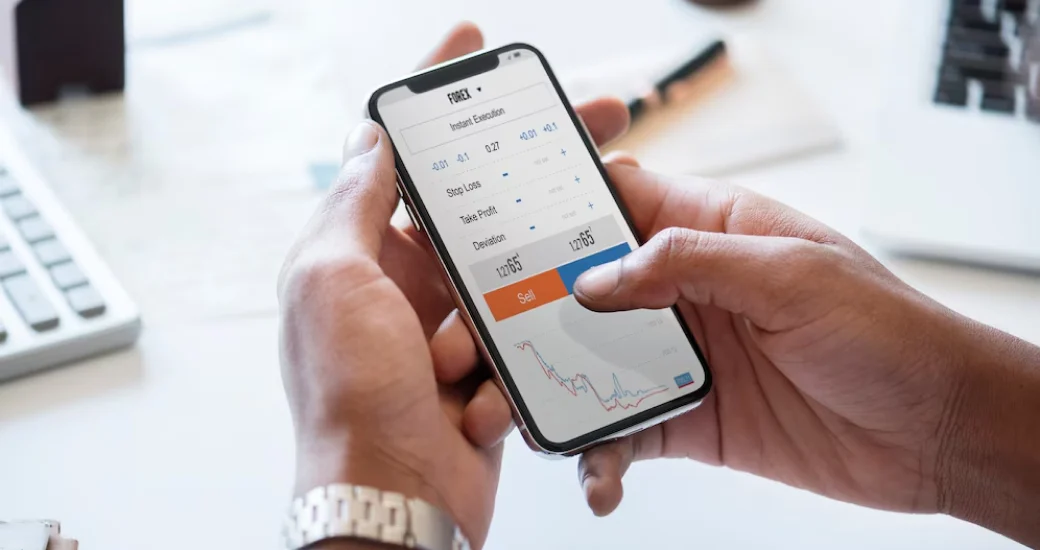The most critical aspect of every app is the UX (user experience). No matter how well-designed or attractive an app is, if the user doesn’t like how it works, they won’t bother using it. That is why most mobile application development services include UX/UI optimization.
Have you developed an app using mobile app development with Xamarin? Or did you go for .NET mobile app development? Whichever may be the development process, there can be numerous in-app micro-interactions within your app. Liking, swiping, linking, hovering, saving, etc., are examples of in-app micro-interactions.

Micro-interactions, which are strongly linked to motion design and the user interface, is the focus of our study. As more and more people realize the value of micro-interactions, they’re becoming more and more commonplace in designing websites and mobile apps.
What Exactly Are Micro-Interactions?
Animations are known as micro-interactions at the point of interaction between the user and the interface, such as when you tap a button or pull down to refresh a feed. What happens in the background should be clear to your consumers when using your software. As a result, micro-interactions become critical to improving the user experience. Tell the user their actions have been acknowledged and accepted once a trigger has been engaged.
Micro-Interactions Have Four Components
-
Trigger
The first phase of the encounter is what sets things off. The interaction is triggered when the user or the system engages in it. For system triggers to work, they must meet a set of conditions. For example, a user who entered an incorrect password is an example. If the password has been lost, a website’s popup asks if the user wants to retrieve it. Typing in the wrong password is the trigger in this instance.

-
Rules
This section explains what happens after the micro-interaction is engaged. A rule says the system must question whether the user forgot their password and if they want it to reset when the scenario described above transpires. It’s important to keep the rules hidden, only known to the designer, and shaped to meet customers’ wants.
-
Feedback
Finally, the system tells the user what’s going on. This can be seen, heard, or felt. Micro-interaction feedback informs visitors that they have started a micro-interaction. For example, if you entered in your password incorrectly, you’d see a message that said, “It’s time to try again” (or that the forgotten password needs to be replaced).
-
Loops & Modes
Fourth, the micro-interaction meta-rules, or what occurs when the conditions or requirements change, are determined in this portion. Micro-transactions are defined by a loop’s length and repetition, such as the number of times a user can type in an incorrect password. On the other hand, Modes control what happens over time, such as blocking an account after three wrong password inputs.
The Importance Of Micro-Interactions
When it comes to micro-interactions, why should we even bother? Sadly, many web developers don’t recognize that low micro-interactions could cost their clients a lot of time and money. For a great website to stand out, it must pay close attention to the tiniest of details. Try choosing mobile application development services from experts with experience in regulating micro-interactions.
In this post, We’ll explain why micro-interactions are so great:
- They make it easier to find things on an app or a website.
- By using them, your website’s visitors can engage more easily.
- They let the user know immediately when an action has been finished and what the results were.
- Users benefit from their tips.
- The symbols convey some elements, like whether or not it’s interactive.
- User satisfaction is greatly enhanced.
- The content you post will be more likely to be shared, liked, and commented on if more people see it.
- They draw the attention of the user.
- Finally, they add a personal touch to your app, making it more enjoyable to visit.
Care for the user is evident in well-designed micro-interactions. That is why they are so highly valued. Instant visual feedback and instruction are provided via an app or website so that users can learn how to work with the system effectively.
When done correctly, micro-interactions can benefit your brand’s image and affect users’ actions without their knowledge. A favorable or unfavorable bias toward a product is as simple as liking or disliking one feature. A phenomenon known as the Hallo Effect can either help or hurt you. As long as you’re careful to pay attention to the tiniest things, you may ensure that your customers are happy with your app or website.

How Can Micro-Interactions Be Designed?
Designers find micro-interactions fascinating because they may experiment with fresh design solutions and explore new ways to surprise their users. It’s possible, but you’ll need to keep a few things in mind.
- Put yourself in your users’ shoes and use all the resources at your disposal to learn how they interact with your software.
- Design and implement working animations. Animations that look good and improve the user’s experience are called “interactive” animations.
- Have fun and keep your visitors entertained. As a result of what the user experiences when utilizing it, they will continue to do so in the future. A user will return if he has a positive experience and is satisfied.
- Don’t be bothersome. When there are too many animations, it has the opposite effect on users. Your app will lose users if you annoy them.
- Avoid jargon and speak in layman’s terms. Funny and humorous material can make you forget for a time how frustrating a blank page can be within the application.
When To Make Use Of Micro-interactions
Micro-interactions are sometimes referred to as the “powerhouse” of user communication in UX/UI. Listed here are the top seven smallest interactions that users have with a product:
-
Feature Of Swiping
In contrast to tapping, the Swipe action is far more dynamic and fluid. It makes it easier for the user to navigate between tabs and learn more about the product. As we’ve been reading, “Don’t make your users think,” swiping is a typical gesture that guides people subconsciously without making them think.
-
Status Of The Current System
When a site or app is down, users need to know what’s happening at all times. Users will likely become irritated and leave if they aren’t updated. As a result of micro-interactions, the user can see exactly what is happening and how long the process will take. Even error messages can be amusing while still effectively retaining the user’s confidence and trust.
-
Tutorials
In today’s fast-paced digital environment, publishing actionable and easy-to-follow blog posts is still useful, but it isn’t enough. Thanks to micro-interactions, users may easily learn and engage with a product or service through engaging and interactive step-by-step tutorials.
-
Call To Action
It’s as though an application or website’s micro-interaction nudges the user into action. Make your CTA engaging so that your user will want to connect with it so that they feel accomplished and empathized with your product or service.
-
Animated Input Fields
It’s a good idea to use animations to make simple tasks more exciting, such as highlighting and zooming in fields when filling out sign-up forms, credit card details, etc.
-
Animated Button Sets
They help users navigate your app or website by directing them to the information. Animations, One must consider special effects, color, form, positioning, and texture to ensure a smooth user experience.
-
Notifications
People with short attention spans might overlook a product or a pending transaction as they rush through the checkout process. It’s possible to entice them back into a transaction with a simple notification.
Conclusion
It is the users who are at the center of the user experience. Use micro-interactions wisely, and your app will become even more user-centric. This is critical for today’s mobile app consumers with such high expectations. For this reason, We believe that the bare minimum approach to app development is the best one. Micro-interactions are essential for a great user experience in an era where satisfying your users has never been more vital.



